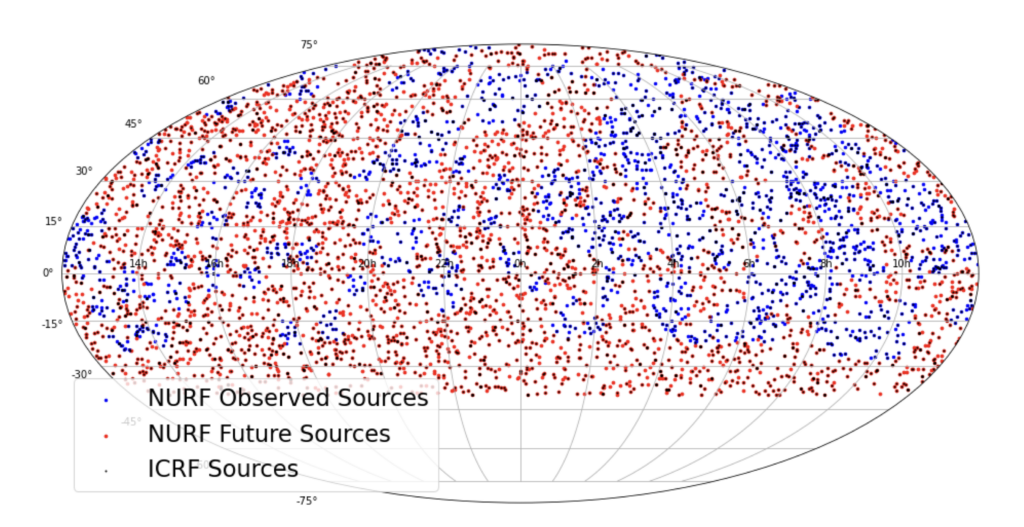Bailee Wolf, a student at The Ohio State University, has a tool to better process radio data, and it could help future spacecraft navigate through the Solar System.
For centuries, seafaring people have used the stars as navigational tools. Stars were seen as motionless points upon the celestial sphere centered on Earth. Though we still use stars for navigation we now know that stars move in relation to each other. In radio astronomy, we can use the radio light of distant quasars in a similar way. Powered by hot gas near galactic black holes billions of light years away, these bright radio sources act as fixed points that allow us to determine our position on Earth, and even in space. Together these sources comprise the International Celestial Reference Frame (ICRF). Measurements of these radio sources, such as those made by the Very Long Baseline Array (VLBA) are typically done at low radio frequencies, but there is a need to have an ICRF at higher frequencies.

This is where the NRAO/USNO Reference and Flux Calibrator Survey (NURF) comes in. The survey is creating a map of ICRF sources at higher frequencies and will add additional sources that can be compared to surveys like Gaia. But the challenge is to distinguish true radio sources from other things like terrestrial radio interference. As part of their summer research experience with NRAO, Bailee used more than forty known sources to calibrate a process of data filtering. From this, she developed software that can better detect new higher frequency sources. This will allow more sources to be detected, helping to create a much larger, and much more precise, navigational catalog.
Read Bailee’s paper on the NURF Survey here.






